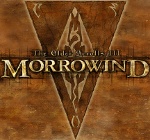- Среда рабочего стола для Debian
- DesktopEnvironment
- Desktop components
- Desktop Environment
- Window Manager
- Tiling Window Managers
- Display Managers
- Display server
- How it works?
- Installation of a Desktop Environment
- Sessions
- Theming and customization
- Fonts
- Common problems
- Heterogeneous environments
- Default applications
- Resources
- End-user
- Cross-theming
- Contributing
- See also
Среда рабочего стола для Debian
Всем привет. Хочу изучить Debian. И вот не знаю какое рабочее окружение использовать. http://cdimage.debian.org/debian-cd/current-live/amd64/bt-hybrid/ — тут их много.
Склоняюсь к двум: Cinnamon и XFCE.
Cinnamon сейчас использую на установленной Linux Mint 17.3.
В принципе все устраивает. Но хочется перейти на Debian и использовать XFCE.
Все, что я знаю про XFCE так это то, что она потребляет малое количество ресурсов.
В общем расскажите пожалуйста, что хорошего в XFCE?
Чем вам понравилась или не понравилась XFCE?
upd: Красивости не особо интересуют. Хочется производительности от ПК.
Оборудование:
Ноутбук: Lenovo IdeaPad B580A
Процессор: Intel Core i3-2330M (2.2 ГГц)
Оперативная память: RAM 6 ГБ
Диск: SSD диск 120 Гб
Видеокарта: nVidia GeForce GT610M 1 ГБ, + встроенная видеокарта
Wi-Fi: broadcom 802.11n network adapter
Bluetooth
Плюсы Xfce — гибкая настройка через GUI, малое количество ресурсов.
Минусы — по умолчанию в Debian стоят не все пакеты, нужно самому поставить gtk3-engines-xfce и xfwm4-themes, для поддержки GTK3 и большего количества тем обрамления окон. Также начисто отсутствует функция форматирования флешек через GUI.
Но сам я пользуюсь именно ей, мне нравится.
Не знаю даже, что тут можно сказать. Поставь сам, попробуй. XFCE можно настроить как угодно, в этом его плюс. Ну а на твоём железе, если оно используется для стандартынх задач, вряд ли есть смысл сильно экономить ресуры.
В gtkfilechooser превью видео завезли уже?
gnome 3. нет, серьезно — из всего существующего отостоя, этот воняет меньше всего.
У них образы до сих пор с KDE4, лол.
А это тут причем? Я о Xfce говорю, а это из GNOME.
Gnome 3 или KDE 5.
Нормальное DE, шустрое, в меру функциональное, хотя мой товарищ(вендузятник) пожелал странного — удалить некоторые элементы из контекстного меню и некоторые не смог, потому как зашиты в исходники. Меня это DE огорчило только невозможностью удобно сменить устройство вывода звука при подключении телека по HDMI. Ещё немного раздражали маленькие рамки для изменения размеров окна, но тут поможет ALT+RKM или нормальная тема. Из личного, нет средств для отключения настроек энергосбережения при просмотре онлайн видео (пока что лучшее решение в KDE5, похуже есть в Gnome 3). В остальном вполне годно. А вообще у меня на ноуте ещё меньше оперативки, чем у вашего, но и кеды, и гном чувствуют себя нормально.
Притом что Xfce построено на GTK+
XFCE. Без багов, с минимальной нагрузкой на железо, весь необходимый софт есть, широкие возможности настройки.
Еще можешь Mate потыкать, мне нравится.
+ Легкая и отзывчивая, настраиваемая, но и несколько дефолтных установок симпатичных, не тащит лишнего.
— Из коробки требует легкого допиливания.
Всем спасибо за ответы )) Решил пока что изучать Debian XFCE в виртуальной машине. А как появиться уверенность в данной среде и в данном дистрибутиве — тогда и установить можно ))
Не вриииииии нечто более жирное чем крыса ещё поискать. Или ты имел в виду, что ресурсов мало останется? Тогда, пожалуй, неправота моя.
Даже не так, «нечто более жирное, жадное до памяти, нефункциональное, и некрасивое», говорю как человек несколько лет этим пользовавшийся.
Я для себя пришёл к такому варианту: обычно ставлю редакцию с xfce (хорошее сочетание функционала, настраиваемости и малого размера), а потом из репы ставлю все окружения, которые охота попробовать. Затем ненужные удаляются.
Что такое ДЕ? Это набор софта. И так. Нужно: менеджер сессии, который запускает, что нам нужно при старте, оконный менеджер, панель (с меню, списком запущенных приложений и т.д.), файловый менеджер, редактор текста, менеджер архивов, power manager, screensaver, movie-player, audio-player, etc. К чему это я? А к тому, что в Xfce4 кроме вм, панели (весьма кривых при пристальном рассмотрении, и не надо спорить!) ничего путного нет. Придется доставлять или от гнома (totem, vinagre, file-roller, . ) или из мате (немо, . ), или КДЕ (okular, kate, amarok, clemenine, dolphin. ), или другие (deadbeef, audacious, vlc, firefox, opera, mpv, почтовик. ). Не надо кидать меня в терновый куст, все приложения приведены для примера. Ну и для чего городить огород? Не проще ли сразу поставить gnome/cinnamon/unity/мате/кде. ИМХО..
На текущий момент есть всего 2 полные ДЕ, а именно: Gnome, Kde. В обеих есть все необходимое и интегрированное в окружение. Все остальное, кроме простых оконных менеджеров, полный отстой. Unity — смесь из разнородных компонентов: старый добрый compiz, часть софта gnome 3.14, часть 3.18 и т.д. + патчи основных библиотек, без которых эта поделка не работает. Mate — старый добрый Gnome со всеми вытекающими из этого. Постепенно воскресенье из пепла, уже на gtk3 перевели, работы идут. Cinnamon сам не использовал, в организации (почти все на gnome), друзья gnone,kde, пару человек на xfce. Трудно поверить, но я его видел одним глазом и то на виртуалке.
Зачем ставить готовые солянки, если можно выбрать наиболее подходящую программу под каждую задачу самому, а не как решила какая-то контора, свалив прикладное ПО разной степени говнистости в одну кучу, прибив его друг к другу гвоздями и обозвав это модным словом «интеграция»? Для первого знакомства с лялипсом, допустим, пойдёт, но не более.
тоже сидел на linux mint 2 года, также тестил всё подряд от Open suse до Runtu.никак не мог найти альтернативы Linux mint. Я так бы сидел на mint если бы не замена ноутбука .Поменял ноут. на более мощный,поставил mint , разницы никакой не увидел,опять тестил все дистибьюритивы подряд ,пытаясь добиться какой то разницы отзывчивости кома. короче сейчас стоит DEBIAN 8.4 окружение Gnom.просто Фантастика ,ноут.без тормозов .всё летает. железо Dell 3521 intel core 7
— Из коробки требует легкого допиливания.
Ничего себе лёгкого, да из коробки у меня на ноутбуке в XFCE был тиринг в браузере и видеоплеерах, уродливые шрифты без сглаживания, не работали клавиши регулировки яркости экрана. Апплет быстрого запуска просто днище полное в плане добавления туда новых элементов, пришлось вместо него использовать несколько апплетов «Запуск приложений» по одной кнопке в каждом.
После допиливания вроде ничего стало, но вот разработчики KDE, GNOME и Cinnamon почему-то озаботились нормальной работой их DE «из коробки».
Если нужно для работы — XFCE
Если для досуга: видео, вк. — Cinnamon
Источник
- DesktopEnvironment
Debian supports all kinds of graphical environments, ranging from full-featured desktop environments, to lighter alternatives and even minimalist but powerful window managers.
A desktop environment provides a coherent suite of applications in terms of look, functionality, and usability.
Desktop components
Desktop Environment
The GNOME project provides two things: The GNOME desktop environment, an intuitive and attractive desktop for users, and the GNOME development platform, an extensive framework for building applications that integrate into the rest of the desktop.
Plasma by KDE is a powerful open source graphical desktop environment for Unix workstations. It combines ease of use, contemporary functionality, and outstanding graphical design with the technological superiority of the Unix operating system.
Xfce is a lightweight desktop environment for various *NIX systems. Designed for productivity, it loads and executes applications quickly, while conserving system resources.
LXDE is designed to work well with computers on the low end of the performance spectrum such as older resource-constrained machines, new generation netbooks, and other small computers.
MATE is the continuation of GNOME 2. It provides an intuitive and attractive desktop environment using traditional metaphors for Linux and other Unix-like operating systems.
Other desktop environments available in Debian include Cinnamon, LXQt, Budgie, Enlightenment, FVWM-Crystal, GNUstep/Window Maker, Sugar Notion WM and possibly others.
Other desktop environments not available in Debian include Unity (1 2), Pantheon, ROX, Equinox/EDE, Étoilé, CDE, Artemis, Durden, Trident, Lumina and others.
Window Manager
As its name says, Window Managers control the layout, appearance and ways to interact with your environment windows. While some Window Managers might be part of your Desktop Environment, some (such as tiled window managers) also do work as standalone, and were eventually designed for that purpose.
Openbox is a lightweight and highly configurable window manager with extensive standards support. It is well known for its minimalistic appearance.
FluxBox is a windowmanager for X that was based on the Blackbox 0.61.1 code. It is very light on resources and easy to handle yet full of features to make an easy, and extremely fast, desktop experience.
Compiz is a compositing window manager for the X Window System that uses 3D graphics hardware to create fast compositing desktop effects for window management.
Search Window Managers with Debtags: x11::window-manager.
Tiling Window Managers
Tiling Window Managers provide a way to control windows behavior by making them tiled, easily occupying the whole screen.
Wmii is a dynamic window manager for X11. It supports classic and tiling window management with extended keyboard, mouse, and filesystem-based remote control. It replaces the workspace paradigm with a new tagging approach.
Awesome is a dynamic window manager for X11. It supports tiling window management with extended keyboard, mouse, and it is scriptable in Lua. It includes many add-ons which can make it very powerful. It replaces the workspace paradigm with a new tiling approach of non-overlaping windows.
Display Managers
In the X Window System, an X display manager is a graphical login manager which starts a session on an X server from the same or another computer. A display manager presents the user with a login screen. A session starts when a user successfully enters a valid combination of username and password.
Display server
Most Desktop Environment currently rely on Xorg (X Window System), and will eventually support Wayland in the future.
How it works?
Installation of a Desktop Environment
During the installation of Debian the installer offers the choice of which Desktop Environment to install. Should you prefer to install one after booting into the new OS, you can decline all the offerings by unticking Debian desktop environment.
A user on Debian 10 (buster) or Debian 11 (bullseye) would be presented with the menu:
- Accepting this selection sees the GNOME desktop environment installed.
- Without deselecting the desktop environment, another entry, GNOME included, may be selected. This will install that selection.
Unticking Debian desktop environment and selecting any other choice leads to that choice being installed.
For an explanation of this behaviour we have to look at part of the Recommends: line in apt show task-desktop.
- The Debian desktop environment installs task-desktop and requires one of the packages listed above. If none of them are on the system, the first in the list, task-gnome-desktop, will be installed to fulfill the dependency. This is the situation when a user accepts only the Debian desktop environment.
Looking at apt show task-mate-desktop we see that it depends on task-desktop and mate-desktop-environment. Ticking MATE, with or without the Debian desktop environment ticked, would satisfy task-desktop’s Recommends: line and install MATE instead of the Gnome default.
Afterward, installing another Desktop Environment is as simple as installing a single package. For some Desktop Environments, you have choice between several meta-packages depending on if you wish to install a minimal set or most of the software coming with the environment. Please refer to the page specific to the Desktop Environment you wish to install for a description of these meta-packages.
Installing a new Desktop Environment will make it available for your system, but you still need to set up your user Session (see below) in order to run it.
Sessions
Sessions are usually managed by the Display Manager, which itself relies on Xsession.
Most Display Managers will allow you to select which Desktop Environment/Window Manager you wish to run for next session, and eventually make it default.
If you don’t want to run a Display Manager to manage your sessions, you might consider using nodm — you may be comfortable merely using a screen locker (eg. XScreensaver, slock) to lock your sessions manually instead of expecting it to insist on username plus password to get in. This is likely inappropriate for servers, but may well be acceptable for a user’s home system, assuming no familial trust issues.
If you have no Display Manager installed at all, you can still start the X Environment from console with the startx command, which is a call to xinit.
Theming and customization
Desktop environments often have customized themes that allow you to change the look and feel of your desktop. The easiest way to customize your desktop environment is to install theme packages from your system’s Package Manager.
Further customization is possible by editing settings of Graphical Toolkits, such as GTK2, GTK3, or directly change the application settings.
Some terminals like xterm and urxvt make use of Xresources to control their appearance and functionalities.
Search X11 Themes with Debtags: x11::theme.
Fonts
Learn about getting Fonts, fonts rendering and other issues.
Common problems
Heterogeneous environments
While the purpose of a desktop is to provide a coherent suite of applications, you are likely to mix applications coming from several desktops which are using various graphical toolkits, with the inconvenience that they will not be well integrated.
Getting a uniform look and feel between your applications might be challenging, and relies on workarounds such as using themes specifically designed to look similar between several environments and applications.
Some features such as the desktop menus can be shared, in particular for environments following FreeDesktop (XDG) guidelines.
Default applications
Having several applications with the same purpose will lead to competition for which software is meant to open when handling your files. Several mechanisms do exist to control these default applications and settings.
Resources
End-user
Display managers like XDM, GDM, WDM, or KDM.
Cross-theming
qt5-gtk-platformtheme : may help to have similar look with QT5 applications within GTK environments
Base16 : guidelines to make similar-looking themes for various applications.
Contributing
See also
CategoryDesktopApplication — wiki pages related to graphical programs for the desktop
Источник













